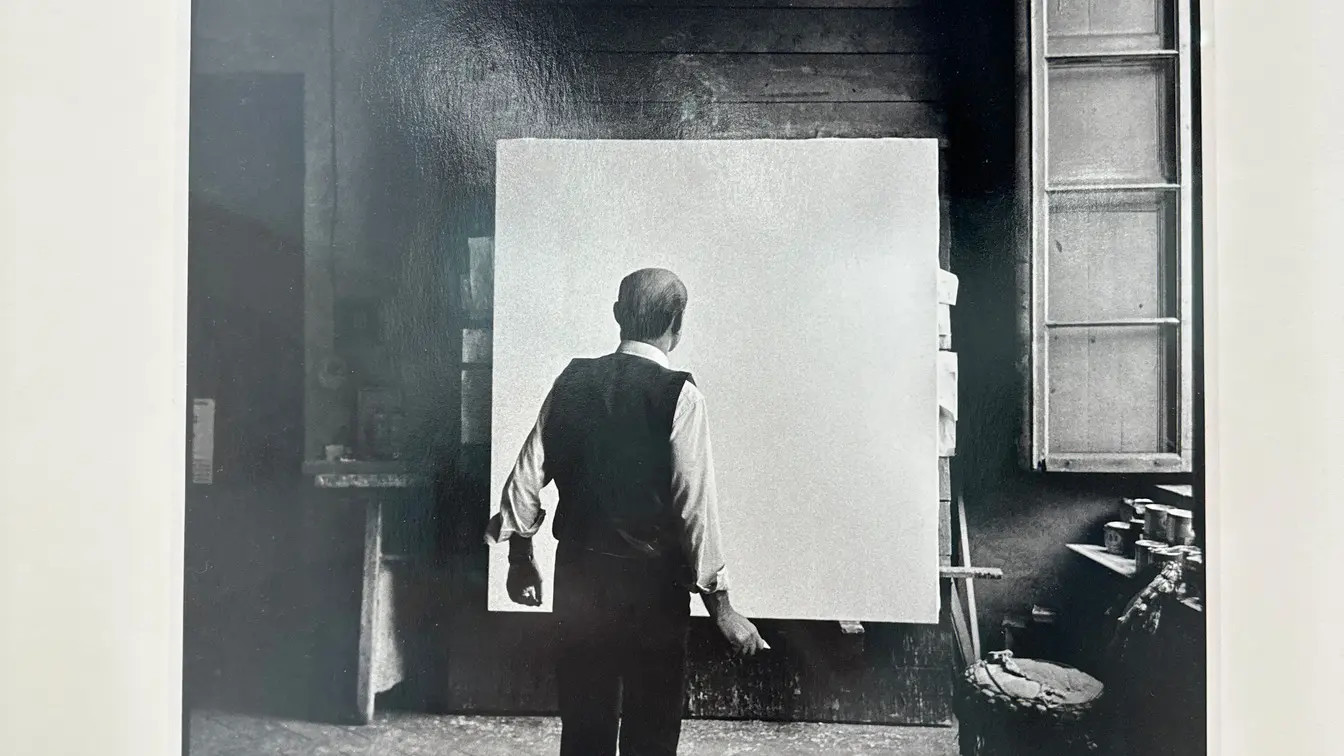

Strolling around the stands at Miart 2023, crowded with colorful and often enormous works, you come across one that does not immediately catch your eye. Simple and almost austere. A number of black-and-white photographs hang on the white walls. You have to go inside and look at them closely to appreciate their subtle and sophisticated charm. The author is Ugo Mulas, official photographer of the Venice Biennale until 1972, collaborator of Giorgio Strehler at the Piccolo Teatro in Milan and the Festival dei Due Mondi in Spoleto. Fifty years after his death in 1973, gallery owner Lia Rumma has chosen to pay tribute to him with a stand in the Decades section, curated by Alberto Salvadori.
“I think Mulas is among the most important and interesting personalities of the twentieth century because he goes beyond representation,” Rumma says, in conversation with Mag. “He was the first photographer-artist to investigate the language of photography, so he opened the door to all new photography. It is no coincidence that we are talking about an artist who is important for Italy, but known and respected all over the world.”
In the postwar period, Mulas was a welcome guest in the art studios of the great Italian and international masters of the era, from Michelangelo Pistoletto to Andy Warhol, Robert Rauschenberg to Lucio Fontana. “He was especially loved and well-liked by artists because they recognized him as one of their own,” the gallery owner explains. “He was the only one allowed to go into their studios and choose the materials he thought were most interesting to compose his photographs. One of the works on display here, for example, depicts the bust of a young woman wearing a beautiful necklace: this piece of jewelry was made by sculptor Giò Pomodoro.”
He had a particularly close connection with the Italian-Argentine master Lucio Fontana. Mulas was the only photographer who managed to capture the 'fleeting moment' of cutting the canvas, the iconic gesture that characterizes Fontana's work. “The story goes that Fontana at first refused to cut the canvas in front of him, as he considered it a personal and private gesture,” Rumma tells us, “but then Mulas suggested almost his entire performance, even going so far as to put Fontana's cutter on the canvas so he could capture it on camera. This means that Mulas' relationship with artists went beyond the formal level, becoming affective and intellectual.”
In addition to the stand devoted to Ugo Mulas, Lia Rumma also has a second stand at Miart 2023 displaying the artists she represents. As an experienced gallery owner who has been attending Miart for many years, how do you see the present and future of this trade fair? “Miart has grown and become more and more important,” she smiles. “It is great at publicity, and most importantly it shows galleries that exhibit beautiful works. I cannot help but be positive about the future.”